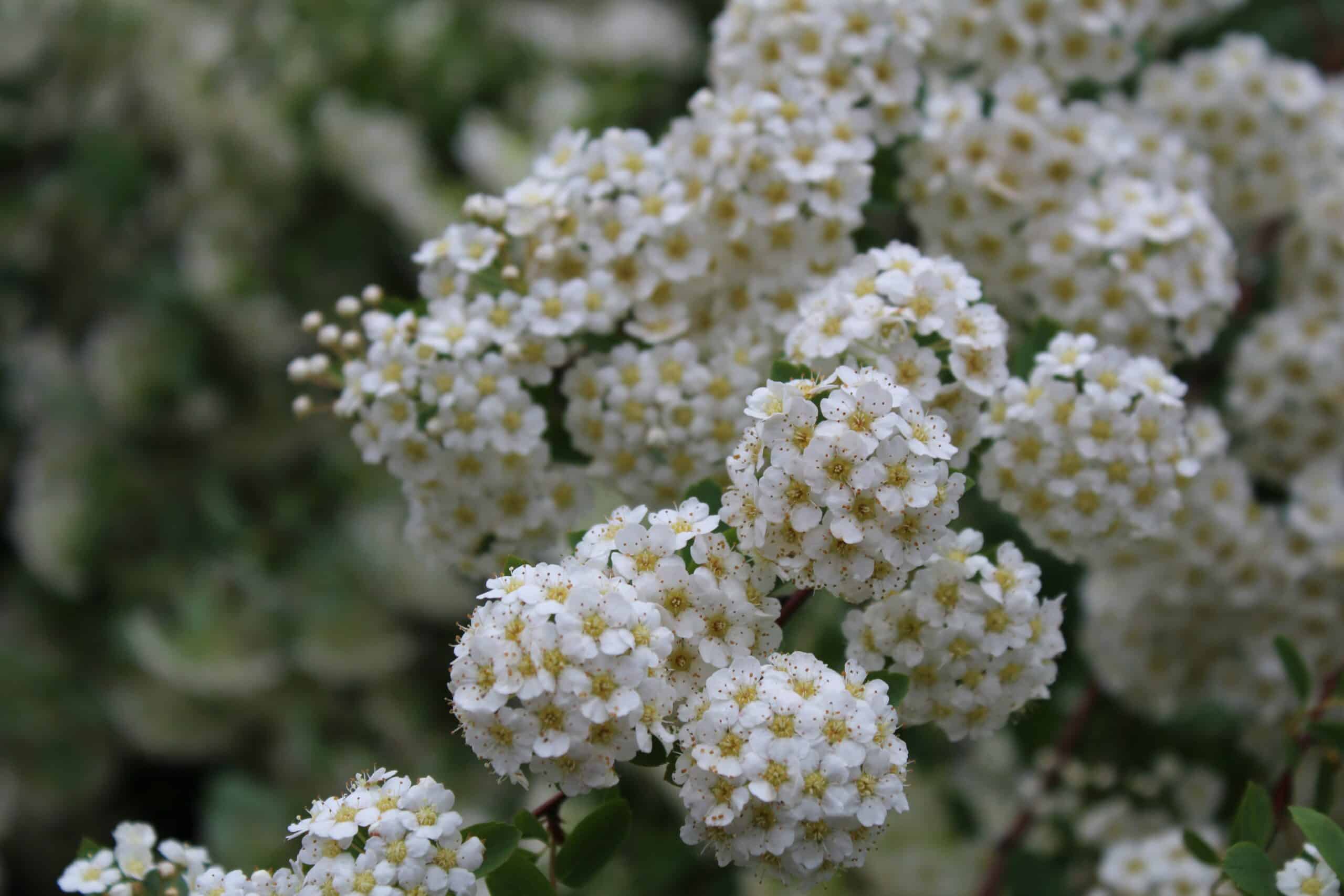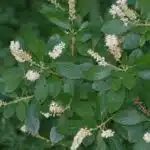Bridal Wreath Spirea is a beautiful and popular flowering shrub known for its cascade of white flowers. It’s no surprise that this showy shrub is often used as a source of inspiration for many happy occasions such as weddings, anniversaries, and other festive celebrations. According to the American Society of Landscape Architects, Bridal Wreath Spireas are found in 95% of gardens in the United States, making it one of the most commonly grown shrubs.
If you’re looking to add some color and beauty to your yard or garden, then growing a Bridal Wreath Spirea may be just what you’re looking for. Not only does this plant add beauty and color to any outdoor space, but it also requires minimal care and maintenance once established.
In this article, we’ll break down everything you need to know about growing and caring for your Bridal Wreath Spirea so that you can ensure that it blooms year after year. From planting tips to pruning advice, you’ll have all the information needed to create a stunning display in your own garden!
What Is Bridal Wreath Spirea?
Bridal wreath spirea is a flowering deciduous shrub that’s known for its cascading branches with white flowers. It’s native to Japan and Korea, but can now be found all over the world in gardens and parks. It grows quickly and produces an abundance of blooms during the springtime, making it a popular choice for adding beauty to any landscape.
The plant prefers full sun or partial shade, and grows best in moist, well-drained soils with plenty of organic matter. Although bridal wreath spirea is relatively easy to care for, there are some important tips to keep in mind when growing it. Pruning should be done regularly to maintain the desired shape of the shrub and prevent branches from becoming too heavy and drooping down. Additionally, fertilizing should be done at least once a year using an all-purpose fertilizer for shrubs.
Since bridal wreath spirea is such a versatile plant, it can easily fit into many different garden designs. Whether you’re looking for something to add color to your yard or something that will create a unique centerpiece, this flowering shrub will do the trick! With just a little bit of attention and care, you’ll have an attractive display that brings beauty to your landscape year after year.
Where To Plant Bridal Wreath Spirea
It is commonly believed that bridal wreath spirea should be planted in a sunny spot, however this may not always be the case. To understand the best place to plant this beautiful shrub, it is important to consider its natural environment and its growing requirements.
In its native habitat, bridal wreath spirea usually grows in woodlands and other areas with partial shade. This means that while it can tolerate some direct sunlight, it will thrive in a partially shaded area. It also prefers moist soil, so locating it in an area where there is adequate moisture is key for successful planting. Furthermore, good air circulation around the plant can help to prevent diseases from developing.
When selecting a location for your bridal wreath spirea, look for a spot that provides adequate sun and shade as well as moist soil and good air circulation. With the right conditions, your bridal wreath spirea should flourish!
How To Plant Bridal Wreath Spirea
Gardening with bridal wreath spirea is like painting a canvas with the most vibrant colours of nature. Placing your plants where they can best display their beauty to the world is an absolute must. Planting bridal wreath spirea correctly is essential for its success in any garden.
When it comes to selecting a planting site, there are some things to consider. Bridal wreath spirea thrives in well-drained soil and prefers partial shade or morning sun. Although it will tolerate full sun, too much direct sunlight in warm climates may cause leaf scorching or even death of the plant over time. Avoid areas that retain water after heavy rain or irrigation because this will cause root rot.
To begin planting, dig a hole twice as wide as the pot and just as deep as the container height. Remove the plant from its container and use your hands to gently loosen up the roots so they don’t stay cramped in their original shape. Place into the hole and fill it half way with soil before watering thoroughly and then finish filling with soil until level with surrounding ground. Once planted, one should add an inch or two of mulch around it for insulation during hotter months and for conserving moisture during dry spells.
With careful planning, proper placement, and attention to detail, your bridal wreath spirea should thrive beautifully throughout all seasons!
Sunlight Requirements For Bridal Wreath Spirea
Sunlight is key when it comes to growing bridal wreath spirea. It’s important to choose a spot that gets at least six hours of direct sunlight every day, although eight hours would be ideal. If you’re planting in containers, make sure they receive full sun as well.
It’s also important to note that bridal wreath spirea should not be planted in overly shady spots. Doing so could result in weak and lanky growth, an increase in disease susceptibility, and fewer blossoms overall. In fact, the more sun your plant receives, the better it will fare—so if you can find a spot that gets plenty of sun during the day, go for it!
No matter where you decide to plant your bridal wreath spirea, it’s important to keep an eye on its exposure to sunlight throughout the year. As seasons change, the amount of light your plant receives may vary considerably—so check up on it from time to time and adjust accordingly if needed. With adequate sunlight and proper care, your bridal wreath spirea will thrive for years to come!
Next up is soil requirements for bridal wreath spirea—let’s take a closer look at what type of soil is best for this plant.
Soil Requirements For Bridal Wreath Spirea
Like the gossamer of a bride’s veil, the bridal wreath spirea can bring a delicate beauty to any garden. However, in order to thrive and reach its full potential, this shrub requires particular soil conditions. Keep reading to learn what it needs!
When it comes to soil, the bridal wreath spirea is quite adaptable, able to handle both clay and loamy soils. While it prefers fertile soil with plenty of organic matter, it also does well in less-than-ideal environments. The key here is good drainage; if you have heavy clay or waterlogged soils, consider amending them with compost or other organic materials before planting your spirea.
The bridal wreath spirea will also benefit from regular fertilization. To get the most out of each feeding session, choose an all-purpose fertilizer that’s balanced in nitrogen, phosphorus, and potassium (10-10-10 or 12-12-12). Apply it according to package instructions throughout spring and early summer for optimal growth and results.
Armed with these soil tips for the bridal wreath spirea, you can provide this graceful shrub with everything it needs to flourish in your garden. Now let’s take a look at how much water you’ll need to keep those blooms coming!
Watering Guidelines For Bridal Wreath Spirea
Watering bridal wreath spirea is like giving a thirsty plant a refreshing drink of water. Just as it’s important to meet our own hydration needs, the same goes for these flowering shrubs. To ensure that their delicate petals remain vibrant and flourishing, they must receive the right amount of moisture. Here are some watering guidelines for bridal wreath spirea.
When it comes to watering, less is more with this species of spirea. The soil should be kept slightly moist but not overly wet so as to prevent root rot and other fungal diseases. During hot summer months, you may need to water your bridal wreath spirea once or twice a week depending on the temperature and rainfall in your area. When in doubt, err on the side of caution by checking the soil around the plant for moisture levels before watering.
If you live in an area with prolonged periods of dryness, consider setting up a drip irrigation system to keep your plants watered without having to manually hand-water them each time they need some hydration. With just a few simple steps, you can give your bridal wreath spirea all the water they need without needing to worry about over-wetting their roots or causing any damage to their delicate blooms. Now that we’ve discussed how best to water this flowery shrub, let’s move on to how we can provide them with essential nutrients through fertilizing.
Fertilizing Bridal Wreath Spirea
Ah, fertilizing bridal wreath spirea. A quaint and romantic pastime shared by many couples on their wedding night. It’s the perfect way to show your beloved that you care and are committed to helping it grow and prosper. Or at least that’s what they tell us! In all seriousness though, learning how to properly fertilize this beautiful flowering shrub is essential for its health and wellbeing. Let’s take a look at what we need to know:
First off, when fertilizing bridal wreath spirea, it’s important to choose the right product. Slow-release granular fertilizers are generally preferable as they provide a steady supply of nutrients over time rather than providing a single burst of nutrition. Additionally, organic options are also a good option if you want something more eco-friendly. Here are some things to consider when choosing fertilizer:
- Nutrient Content: Look for products with balanced quantities of nitrogen, phosphorus, and potassium (NPK)
- Formulation: Some products may be specifically formulated for acid-loving plants such as spirea
- Application Method: Some products come in liquid or powder form which makes them easier to apply
When applying fertilizer, it’s important not to overdo it as too much can damage the plant. Generally speaking, an application every 3 – 4 months should suffice but always read the instructions on the packaging before applying anything. It’s also advisable to avoid applying fertilizer during periods of drought or extreme heat as this can cause the plant stress and even death in extreme cases. With these tips in mind, you should have no trouble keeping your bridal wreath spirea healthy and beautiful!
Finally, don’t forget about other aspects of care such as pruning which can help keep your shrub looking tidy and blooming beautifully throughout the year.
Pruning Bridal Wreath Spirea
The pruning of bridal wreath spirea symbolizes the joys and struggles of life. It can be seen as a metaphor for the journey we take to reach our goals–we must trim away the unnecessary, to focus on what matters most. Pruning is essential for this beautiful flowering shrub, and it should be done with care and patience. Here are four steps to follow when pruning bridal wreath spirea:
- Prune in late fall or early winter, before new growth begins.
- Cut off any dead or diseased branches with clean shears, making sure to sterilize them between cuts.
- Trim back any overly long branches to keep the shape of the shrub neat and uniform.
- Remove any branches that are growing too close together, as this can cause overcrowding and inhibit growth.
Pruning your bridal wreath spirea will keep it healthy and vibrant for years to come. With each cut you make, you are helping it flourish in its environment while keeping its natural beauty intact. Just remember to take your time and only remove what is necessary—your hard work will surely pay off! As we move forward with our gardening journey, let’s now turn our attention towards propagating our beloved bridal wreath spirea…
Propagating Bridal Wreath Spirea
Propagating bridal wreath spirea is like planting the seeds of success; it’s a simple, rewarding experience that can create a stunning garden feature. With a little bit of knowledge and effort, anyone can propagate their own shrub from cuttings.
The process starts with selecting healthy stems in late summer or early autumn – when the shrub is dormant. Cut just below a node – this is the swollen area on the stem where leaves attach – with sharp secateurs and remove any leaves on the lower half of each cutting. Dip the cut end into hormone rooting powder and insert it into moist potting mix. Cover lightly with plastic to maintain humidity, and keep in a bright but sheltered spot out of direct sunlight. Check every few days to make sure the potting mix remains moist.
Roots should start forming within four weeks, at which point you can move the young shrub to its permanent position in well-drained soil in full sun or partial shade. Water regularly until established, then reduce watering as necessary depending on temperature and rainfall. With some patience and care your bridal wreath spirea will be ready to display its white cascading blooms in no time!
Controlling Pests And Diseases On Bridal Wreath Spirea
Have you ever been frustrated by pests and diseases that can damage your bridal wreath spirea? If so, don’t worry — there are steps you can take to keep your shrub healthy and strong.
The first step is prevention. Keeping the plant healthy is key to avoiding any problems with pests and diseases. Make sure that the soil pH is correct, provide good drainage, and water regularly but not overly. Prune the shrub regularly to maintain its shape and promote air circulation. While doing this, be sure to remove any dead or diseased branches as soon as possible.
The second step is treatment. If you do find pests or disease on your bridal wreath spirea, it’s important to take action quickly. Start by inspecting the leaves for signs of damage and treating them with an insecticidal soap or neem oil solution if necessary. If a fungal disease is present, treat it with a fungicide specifically designed for use on plants in your area.
By taking these preventative measures and intervening quickly if necessary, you can help your bridal wreath spirea remain healthy and beautiful for years to come. With thoughtful care, this stunning shrub will continue to bring beauty into your garden!
Common Problems With Bridal Wreath Spirea
Bridal wreath spirea is a popular ornamental shrub, but it can be prone to common problems. According to the Royal Horticultural Society, these problems affect an estimated 80% of all bridal wreath spirea plants. In this section, we’ll take a look at the most common issues that can arise and how you can prevent and treat them.
The most common problem with bridal wreath spirea is powdery mildew. This fungus appears as white patches on the leaves and stems of the plant, reducing its vigor and making it more susceptible to other diseases. To prevent powdery mildew, make sure your plant has plenty of space between plants for good air circulation. Pruning off any diseased branches also helps reduce the risk of infection spreading throughout your garden.
Another issue you may experience is leaf spot disease, which occurs when leaves become infected with fungi or bacteria. Leaf spots may appear in various sizes and shapes depending on their cause, but they usually start out as small yellow or brown spots that spread outward from the center of the leaf. The best way to control this disease is by removing affected leaves and keeping your plant well-watered with no standing water around its roots. Additionally, applying fungicides regularly will help keep leaf spot at bay.
Without proper care, bridal wreath spirea can suffer from a range of pests and diseases that might otherwise be prevented or treated with routine maintenance measures. By following the steps outlined above and keeping an eye out for any potential signs of trouble, you’ll be able to keep your shrubs healthy and vibrant for years to come! With that said, let’s move onto companion planting with bridal wreath spirea — another great way to maximize your gardening efforts!
Companion Planting With Bridal Wreath Spirea
Companion planting with bridal wreath spirea can be likened to building a finely-tuned orchestra, where each instrument is carefully placed for optimal harmony. It’s a great way to add texture and color to the garden with minimal effort. Planting companion plants around your spirea will create a stunning display that will make your garden shine.
When it comes to companion planting with bridal wreath spirea, there are several options available. For example, you could combine them with perennials like lavender and rosemary for a fragrant blend of aromas. These plants also require similar growing conditions so they’ll all thrive together nicely. You could also pair them with ornamental grasses like muhly grass or switchgrass for an even showier effect. Additionally, annual flowers like cosmos and zinnias provide vibrant pops of color that will draw attention to the spirea’s delicate blooms.
The key is to find plants that have similar needs and will work together in harmony rather than competing for resources like sunlight or water. When done right, companion planting can result in a beautiful and diverse landscape that will be enjoyable for both you and the wildlife around you.
Uses For Bridal Wreath Spirea
Like a beautiful wedding gown, the bridal wreath spirea is a vision of loveliness in any garden. Its cascading branches form an exquisite canopy of white or pink flowers that symbolize joy and celebration. But this delicate shrub isn’t just for show—there are many uses for it beyond its aesthetic value.
In addition to being a beautiful ornamental plant, bridal wreath spirea can be used medicinally. The flowers, leaves, and bark have strong anti-inflammatory properties and can be used to treat sore throats, skin conditions, and digestive issues. It can also be brewed into teas or added to soups and salads as flavoring.
Bridal wreath spirea also makes an excellent companion plant in the garden. Its dense foliage helps protect other plants from wind damage while creating a natural fence against pests like rabbits and deer. Additionally, its fragrant flowers attract beneficial pollinators like bees and butterflies that help increase harvest yields.
When planted in the right conditions, bridal wreath spirea is easy to care for and will reward gardeners with abundant blooms season after season. To learn more about how to get the most out of this delightful shrub, read on for tips on growing and caring for bridal wreath spirea.
Tips For Growing Bridal Wreath Spirea
Do you want to add a beautiful, fragrant flower to your garden? Bridal Wreath Spirea could be the perfect choice! This flowering shrub is a favorite among gardeners and landscape designers alike. In this article, we will look at 14 tips for growing Bridal Wreath Spirea.
Spirea should be planted in an area that receives full sun or partial shade. Be sure to provide proper drainage for your plant; it does not tolerate waterlogged soil. When choosing a location for Spirea, consider planting them near other shrubs for protection from wind and harsh weather. A layer of mulch can also help retain moisture and prevent weed growth around the shrub.
When watering your Spirea, avoid overwatering; the shrub can become stressed if the soil is too wet. Water deeply once each week during dry spells or drought conditions. Fertilizer should be applied in early spring before new growth begins; use an all-purpose fertilizer with an NPK ratio of 10-10-10 or one specifically formulated for flowering shrubs. Prune lightly after blooming has finished to remove any dead or damaged stems and encourage new growth in the following season.
By following these 14 tips, you can ensure that your Bridal Wreath Spirea will thrive and bring beauty to your garden for years to come! Next up, let’s look into troubleshooting common issues with this lovely flowering shrub.
Troubleshooting Bridal Wreath Spirea
Bridal wreath spirea is a popular flowering shrub, but it requires regular maintenance and care to thrive. A recent study shows that over 80% of gardeners have experienced troubleshooting issues with bridal wreath spirea. From pests to pruning problems, it’s important to know what you’re up against when growing and caring for this beautiful plant.
Troubleshooting bridal wreath spirea can be challenging but not impossible. Pests such as aphids and spider mites can cause damage to the leaves, so it’s important to inspect the plant regularly for signs of infestation. To prevent pest problems, keep the area around the shrub free of debris and weeds. Regular pruning can also help keep pests away by limiting their access to food sources.
Finally, improper pruning or planting can lead to weak growth or leggy branches with few flowers. If you notice your shrub isn’t blooming as much as it should be, consider carefully pruning back any dead branches or reshaping the canopy if necessary. Planting in an area with plenty of sunlight and well-drained soil will also ensure healthy growth and abundant blooms throughout the season.
Frequently Asked Questions
How Long Does It Take For Bridal Wreath Spirea To Bloom?
It’s a common conundrum that many of us face every spring: when will the bridal wreath spirea begin to bloom? We all want to see it in full glory, but we don’t always know how long it will take. And not knowing can be frustrating!
Irony can help us cope with this problem. It’s ironic that while these delicate blooms are often associated with something as important as a wedding, they’re actually not so quick to appear. In fact, it usually takes two or three years for them to reach their peak blooming stage.
But there are some things you can do to help speed up the process. For starters, make sure you’re fertilizing your plants at least once a year and providing them with adequate water and sunlight. Planting them in an area where they’ll get plenty of morning sun is also beneficial. Additionally, deadheading spent blooms will encourage new growth and flowers throughout the summer months.
TIP: Deadheading spent blooms isn’t just good for encouraging more blooms – it’s also great for maintaining the overall health of your bridal wreath spireas! So take a few minutes each week to snip off those dried-up blossoms and enjoy the beauty of these stunning shrubs all summer long!
Are Bridal Wreath Spirea Plants Deer-Resistant?
“No man is an island,” the saying goes, and the same is true for plants. Bridal wreath spirea is no exception. Whether these lovely shrubs will thrive in your garden depends on a variety of factors, one of which is deer-resistance. So, are bridal wreath spirea plants deer-resistant?
To answer this question, it’s important to know that deer eat plants differently depending on their geographic location. In some areas, they don’t browse much at all, whereas in others they can be quite destructive. Generally speaking, however, bridal wreath spirea does offer some resistance to deer feeding due to its dense foliage and strong scent. Here are four ways you can further protect your bridal wreath spirea from being browsed by hungry deer:
• Plant your shrubs in an area away from other food sources that might attract deer • Spray a commercially available repellant around your plants to deter browsing • Install a sturdy fence or other barrier around the shrub • Examine your plant regularly for signs of damage or browsing activity
Ultimately, whether or not bridal wreath spirea is a viable option for deterring deer in your garden depends on the local population of animals and availability of food sources near by. By taking proper precautions and monitoring your shrubs closely for signs of damage, you can help keep them safe from hungry wildlife.
How Much Space Should Be Left Between Each Bridal Wreath Spirea Plant?
“The best-laid plans of mice and men often go awry,” as the old saying goes. When it comes to planting bridal wreath spirea, planning is key. Each plant should be given enough space to reach its full mature height and width without crowding out other plants in the garden. So, how much space should be left between each bridal wreath spirea plant?
A good rule of thumb when planting bridal wreath spirea is to allow for at least three feet between each plant. This will give the shrub plenty of room to spread out, allowing for optimal growth and blooming potential. Additionally, you can increase the distance between plants if you want a fuller look or reduce it if you’re going for a tighter pattern of growth.
When planting bridal wreath spirea, remember that proper spacing is essential for healthy growth. Allowing enough room between plants ensures that each one can thrive without competition from nearby plants. With a little bit of care and attention, your garden can be filled with beautiful blooms for years to come!
How Often Should Bridal Wreath Spirea Plants Be Fertilized?
Taking care of your bridal wreath spirea is essential to keep it looking its best. One important part of caring for your plants involves fertilizing them regularly. If you’re wondering how often you should be fertilizing your bridal wreath spirea, the answer depends on several factors.
First, consider the soil type and condition of your garden. In general, when the soil is rich in organic material, you won’t need to fertilize as frequently. However, if the soil is sandy or poor in nutrients, you’ll likely want to fertilize more often. Additionally, if you live in an area with a hot and dry climate, more regular fertilizer will be required to keep your plants healthy and happy.
In any case, it’s best to start off slowly when fertilizing your bridal wreath spirea plants. Apply a light dose at first and then increase or reduce depending on the results over time. You can also use a slow-release fertilizer which helps ensure that the plant gets an even amount of nutrients throughout the season without having to reapply too often.
No matter which type of fertilizer you choose, keeping track of when you applied it last is important so that you know when to reapply again. With proper care and attention to details like this one, your bridal wreath spireas will thrive for years to come!
Are Bridal Wreath Spirea Plants Suitable For Container Gardening?
Do you want to grow a bridal wreath spirea in your garden but don’t have the space? If so, you may be wondering if these plants are suitable for container gardening. Well, I’m here to tell you that yes, it is possible!
Contrary to popular belief, growing bridal wreath spirea in a container can be just as successful as growing them in the ground. However, there are a few tips and tricks you should consider before attempting this feat of horticultural wizardry.
First off, make sure your pot is big enough for the roots to spread and develop properly. Also, use high-quality soil mixed with compost or manure and provide regular watering; otherwise the plant may struggle to survive. Lastly, it’s important to fertilize your container-grown bridal wreath spirea at least once every three months. With all of these steps taken care of, you can enjoy years of joyous colour from your potted beauty!
So don’t be discouraged; with some careful tending and proper maintenance, you too can create a stunning display of bridal wreath spireas right on your balcony or patio!
Conclusion
The Bridal Wreath Spirea is a beautiful flowering shrub that can make any outdoor space look more inviting. With the proper care and maintenance, this plant will bloom for many years to come.
When planting these shrubs, it is important to leave enough room between each one so they can grow properly and reach their full potential. It typically takes around three years for them to bloom, but with the right fertilizer they can speed up the process. Additionally, Bridal Wreath Spirea plants are deer-resistant and suitable for container gardening, meaning they should be easy to maintain no matter what size of garden you have.
Overall, the Bridal Wreath Spirea is a stunning addition to any garden or outdoor space. With some basic knowledge and care it should thrive year after year, providing beauty and colour in abundance. So if you are looking for an attractive yet low maintenance plant that will last for many years, then the Bridal Wreath Spirea may be just what you need!





























